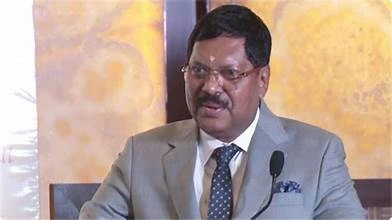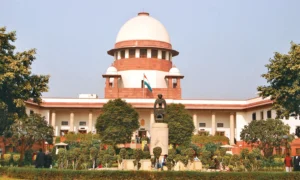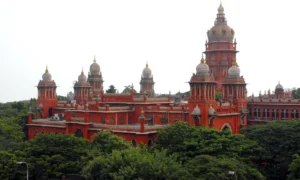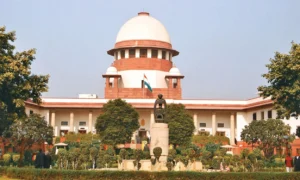
Chief Justice of India (CJI) Bhushan Ramkrishna Gavai on Friday reaffirmed his opinion that the principle of creamy layer exclusion, introduced by the Supreme Court in Indra Sawhney vs. Union of India (1992) in the context of reservations for Other Backward Classes under Articles 15(4) and 16(4), must also be applied to beneficiaries within the Scheduled Castes and Scheduled Tribes.
Speaking at the ceremonial farewell hosted by the Supreme Court Bar Association (SCBA) ahead of his demitting office on November 23, the CJI said that despite facing significant criticism from segments of his own community, he was of firm view that the constitutional commitment to substantive equality under Article 14 required a realistic acknowledgement of socio-economic differentiation within historically oppressed groups.
Article 14 embodied the constitutional doctrine that equality did not mean identical treatment but required equity-based measures to uplift those who remained structurally marginalised.
He referred to the seven-judge Constitution Bench judgment of August 1, 2024, which held by a 6:1 majority that sub-classification of SCs and STs was constitutionally permissible where supported by empirical evidence. The verdict overturned the 2004 ruling that had treated these communities as homogeneous and not capable of internal categorisation.
Justice Gavai was among the four judges who explicitly advocated for state policies to identify the creamy layer among SCs and STs, observing that excluding socially and economically advanced groups was an essential prerequisite to achieving true equality and ensuring equitable distribution of constitutionally guaranteed opportunities.
The CJI said that he was sharply criticised by members of the Dalit community after the judgment. He explained that while writing the decision, he posed a constitutional question to himself: whether a child growing up in a remote tribal region could truly compete on equal footing with a child who, by virtue of his parent’s professional achievements, had access to elite educational resources. The answer underscored the need for distributive justice rather than uniform treatment in the name of equality, he added.
He recalled that even one of his law clerks, himself a member of the Scheduled Caste community and son of a senior government officer in Maharashtra, had voluntarily stated that he did not intend to claim reservation benefits because he recognised the privileged environment he had grown up in. Such awareness was too often lost in the realm of political discourse, he noted.
Speaking of jurisprudential rationale, he said the members of socio-economically privileged households, including the children of senior members of the civil services, could not reasonably claim parity with those emerging from marginalised backgrounds, including the children of landless agricultural labourers.
He recalled his remarks made during a public programme, wherein he argued that internal differentiation was indispensable to prevent the more advanced sections from appropriating the benefits of reservations intended for the most disadvantaged.
The CJI pointed out that OBC reservations already incorporate an income-based ceiling, currently Rs 8 lakh per annum, beyond which beneficiaries fell within the creamy layer and are excluded.
Noting that judges did not typically justify judgments after pronouncement, the CJI said, having substantially completed his judicial responsibilities, he could articulate the broader constitutional philosophy behind his stance, which continued to be debated both within the judiciary and in the political domain.
He reflected on his professional journey, stating that constitutional morality and the judicial oath had guided him across four decades of service, from his years at the Bar to the High Court and ultimately the Supreme Court.
CJI Gavai also invoked Dr BR Ambedkar’s historic speech to the Constituent Assembly on November 25, 1949, cautioning that unless India eradicated deep-rooted socio-economic inequalities and moved towards realising substantive equality, the democratic structure could collapse like a ‘house of cards’.
CJI Gavai expressed gratitude to his fellow judges, his family, and 18 law clerks who supported him over the course of his judicial career. He concluded by expressing his intention to continue contributing to public life after retirement, particularly through initiatives aimed at improving socio-economic outcomes for tribal communities in his home district in Maharashtra.
Justice Surya Kant, who is set to assume charge as the next CJI, commended CJI Gavai, stating that he approached every matter with empathy, treating each dispute as a reflection of an individual’s hardship, struggle, and search for justice. He said CJI Gavai’s legacy was defined not only by the judgments he authored but by the humane and inclusive tone he set on the Bench.
Justice Kant remarked that one of Justice Gavai’s defining qualities was his instinctive ability to resolve differences through dialogue and understanding rather than rigidity, strengthening the institution through consensus-building. He closed his tribute with a poetic verse, noting that some individuals, even in their farewell, left behind indelible marks and were remembered not merely for their position but for the principles they embodied.
Justice Gavai, the second CJI from the Scheduled Caste community after Justice KG Balakrishnan and the first Buddhist judge to occupy the highest judicial office, was elevated to the Supreme Court on May 24, 2019, and served as Chief Justice for a little over six months.
Attorney General R Venkataramani and other senior functionaries of the Bar also praised CJI Gavai’s leadership and administrative reforms during a period marked by intense constitutional contestation.
The event was attended by SCBA President Vikas Singh, several sitting judges of the Supreme Court, law officers, and senior members of the legal fraternity.
📰 Crime Today News is proudly sponsored by DRYFRUIT & CO – A Brand by eFabby Global LLC
Design & Developed by Yes Mom Hosting






